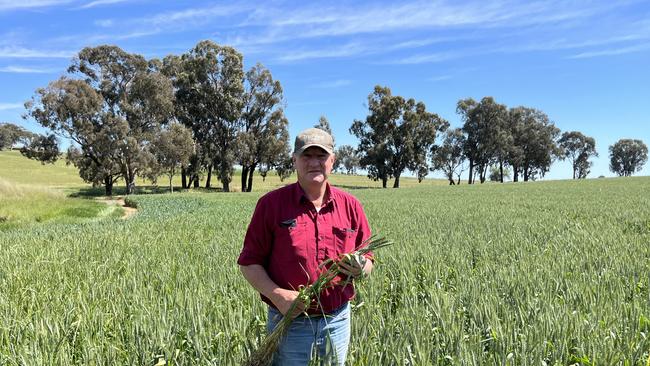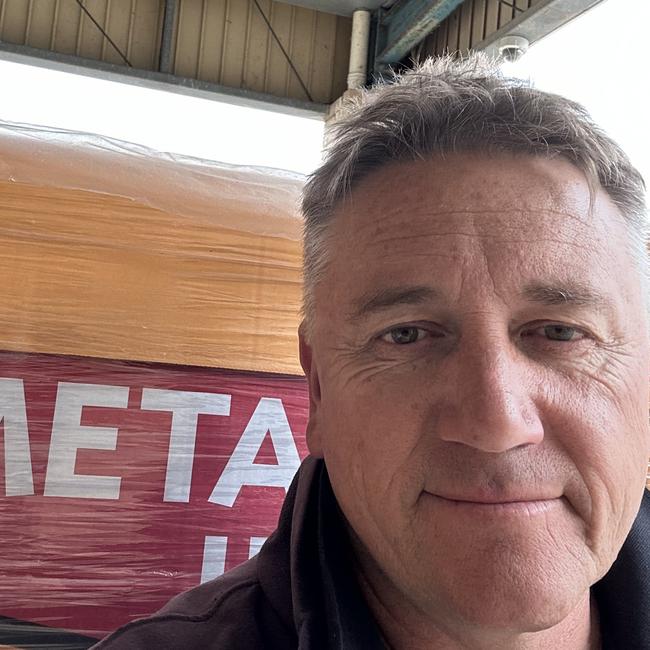Cropping season: Meet 10 of Australia’s finest agronomists
There is one thing all agronomists agree on — they have one of the best jobs in the world. We talk to 10 of the best Aussie agronomists about what they’re seeing this season.
There is one thing all agronomists agree on – they have one of the best jobs in the world.
They work outside, are often natural-born problem solvers and all share a passion for agriculture.
Their role is diverse, ranging from helping farmers achieve their goals to getting the most out of a paddock or tackling pests and diseases. We caught up with 10 of Australia’s finest agronomists to get their take on the current seasonal conditions.

FRANK MCRAE
After starting his career in 1981, Frank McRae from DLF Seeds is based at Orange in NSW.
Frank’s first job was with the NSW Department of Primary Industries in southern NSW where he was based at Yanco and Wagga Wagga. He also worked at the former Temora Research Station.
He said conditions in the central west of NSW were dry, but farmers had largely stuck to their rotations and were now waiting for some follow-up rain.
Over the years he has earned a reputation as one of Australia’s most astute crop judges and is regularly called on to assess the entries in competition, including the Ag Societies Council dryland wheat competition.
“I enjoy the interaction of working with farmers and helping them to get the most out of crops and pastures,” Frank said.

NEIL DURNING
Neil Durning from Riverina Independent Agronomy is based in Wagga Wagga in southern NSW.
He covers the area from West Wyalong down to Albury and across the Victorian border.
Neil said while conditions were tough at the moment, with the area “scratching for moisture,” the field of agronomy was a good one to be in.
He described himself as a problem solver who enjoyed working with farmers.
Neil said the best part of the role was working outside.

DESI TOOHEY
Desi Toohey has been an agronomist for 16 years and is currently based at Albury in southern NSW with Albury.
He said the earlier sown crops were starting to emerge in his region and people were hoping for some good follow-up rain.
Earlier in his career, Desi worked at Griffith in the Murrumbidgee Irrigation Area and now his work covers the geographic areas of Albury, Rutherglen, Urana, and Oaklands and across the boarder into northern Victoria.
“The job is never the same, you are always challenged and there is always a new challenge to work on,” he said.
“I enjoy working with growers and helping them to take their production to the next level.”

DON KIRKPATRICK
Don Kirkpatrick started his career as an agronomist in 1988 and began working with the NSW Department of Primary Industries at Wagga Wagga.
He currently farms at Mangoplah.
He said although it’s dry in his region the traditional break was usually closer to around May 10 or 12.
He said farmers were comparing the current dry conditions to the fact we have had three good years.
“It is only May and in this area we got 50mm of rain in early April, which was a bonus,” he said.
“There is plenty of lupins up and there’s plenty of wheat and canola that is up and about too”.

PAUL LAVIS
Paul Lavis has been an agronomist for 22 years and is currently working at IK Caldwell at Corowa in NSW.
He said every year is different and there is always something new that pops up whether it is a disease or an insect or crop.
“Things are looking dry and I usually don’t get hung up on the weather and 10mm of rain would be nice,” Paul said.
“A lot of canola is coming up but it is slow. Needs some moisture. Don’t usually want a speed hump in canola growth”.

JOSH MCLEOD
Josh McLeod from Elders in Bendigo has been an agronomist for eight years.
He currently travels in every direction within a radius of about an hour of Bendigo.
He said there was subsoil moisture available but it was at a depth of below seven centimetres.
“That top five centimetres is really drying out quite quickly,” he said.
He said the role of being an agronomist was rewarding, and there was enormous satisfaction from watching a grower get returns and success from their hard work.

JOSH MERRETT
Josh Merrett from Nutrien Kaniva said his area was looking dry and there was virtually no rainfall in April.
“It is pretty hard on the gear with sowing at the moment,” he said.
Mr Merrett said farmers were planting beans and vetch, but they were pausing and wondering whether or not to do canola at this stage.
He said the average break for the area was around May 25, so it was a manageable situation.
He has been an agronomist in the Kaniva region for eight years and said sometimes it was better to have a later break and better spring than the early break.

KIERAN O’KEEFFE, GRIFFITH
Kieran O’Keeffe is a regional extension officer for CottonInfo for southern NSW and has been in the role for 11 years.
He was previously a regular face in the Murrumbidgee irrigation after working as a NSW Department of Primary Industries district agronomist based at Coleambally for 10 years.
He said conditions in his area were mixed.
“For summer cropping, things are looking very good,” he said.
Mr O’Keeffe estimated that cotton picking in the southern valleys was about 20 per cent to 30 per cent of the way through.
On the flip side those wanting to plant winter crops were still hoping for an autumn break and conditions were dry.

ROB FOX
Rob Fox is an agronomist at Marnoo and says people in his area are currently dry-sowing winter crops.
He has been an agronomist since 2013 and said the situation is not as dire as in some other areas of Australia.
“We are not going too bad here at the moment,” he said.
Mr Fox covers the Wimmera and Mallee and described current sowing as a “mixed bag” in terms of where people are at.
“There’s still a lot of canola to go in, and we are seeing some people starting on barley,” he said.

TIM PARAMORE, WALLA WALLA
Tim Paramore of Tim Paramore Agronomic Services at Walla Walla in southern NSW said despite the dry conditions, growers in his area were quietly optimistic about the season.
“A lot of people in this area are sowing,” he said.
With 30 years of experience as an agronomist, Mr Paramore said he believed a break would arrive, but farmers may be waiting for longer than ideal.
“The average seasonal break for our area occurs on May 15 so that gives an idea of how often we get the later breaks,” he said.
“I think we can be reasonably hopeful that it will rain in June.”




